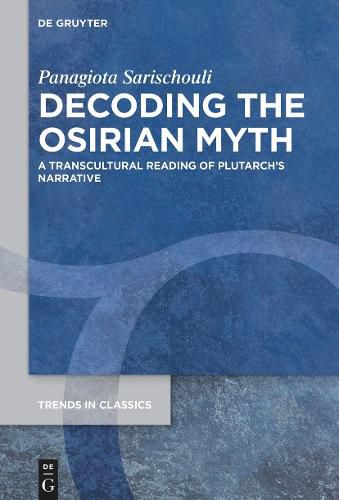Readings Newsletter
Become a Readings Member to make your shopping experience even easier.
Sign in or sign up for free!
You’re not far away from qualifying for FREE standard shipping within Australia
You’ve qualified for FREE standard shipping within Australia
The cart is loading…






The earliest written references to the Osirian myth-complex appeared already in the Pyramid Text spells (c. 2400-2300 BCE). The most complete exposition of this ancient Egyptian myth is, however, found in the Greek treatise On Isis and Osiris, in which the 2nd-century CE Platonist Plutarch utilises Egyptian mythology to advocate his philosophical ideas concerning the divine and the nature of the cosmos. This book aims at "decoding" Plutarch's narrative of the Osirian myth, linking his claims to the existing Egyptian and Greek parallels. It thus analyses a multitude of mythic and religious traditions from a transcultural perspective, exploring the relation of the Pharaonic features of the Osirian divinities to the features they had acquired in Ptolemaic and Roman times, interpreting the Egyptian myth within the overall framework of parallel mythologies from other cultures, and examining whether the brief mythic stories (historiolae) recited in Late Egyptian ritual texts can be deployed to enrich the context of certain obscure episodes in Plutarch's account of the myth. The book will be of great interest not only to scholars and students of Plutarch and later Middle Platonism, but also to Egyptologists. Due to its thematic variety and scope, this publication will also appeal to a wider array of readers (specialists and non-specialists alike) interested in religious syncretism, interreligious connections, and the challenge of multiculturalism from Hellenistic times until Late Antiquity.
$9.00 standard shipping within Australia
FREE standard shipping within Australia for orders over $100.00
Express & International shipping calculated at checkout
The earliest written references to the Osirian myth-complex appeared already in the Pyramid Text spells (c. 2400-2300 BCE). The most complete exposition of this ancient Egyptian myth is, however, found in the Greek treatise On Isis and Osiris, in which the 2nd-century CE Platonist Plutarch utilises Egyptian mythology to advocate his philosophical ideas concerning the divine and the nature of the cosmos. This book aims at "decoding" Plutarch's narrative of the Osirian myth, linking his claims to the existing Egyptian and Greek parallels. It thus analyses a multitude of mythic and religious traditions from a transcultural perspective, exploring the relation of the Pharaonic features of the Osirian divinities to the features they had acquired in Ptolemaic and Roman times, interpreting the Egyptian myth within the overall framework of parallel mythologies from other cultures, and examining whether the brief mythic stories (historiolae) recited in Late Egyptian ritual texts can be deployed to enrich the context of certain obscure episodes in Plutarch's account of the myth. The book will be of great interest not only to scholars and students of Plutarch and later Middle Platonism, but also to Egyptologists. Due to its thematic variety and scope, this publication will also appeal to a wider array of readers (specialists and non-specialists alike) interested in religious syncretism, interreligious connections, and the challenge of multiculturalism from Hellenistic times until Late Antiquity.